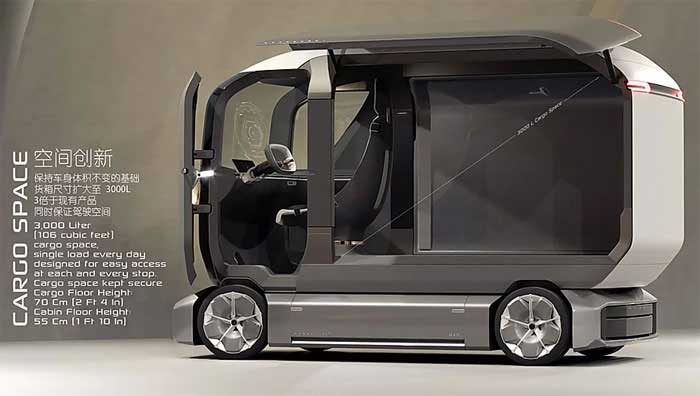Mike Wang, who is the CEO of Quadrobot, has introduced something very extraordinary. He has launched a four-wheel automobile that is operated electrically and is designed for delivery service in the urban neighborhoods. The company is based in the Detroit area and is funded by United States and China. At the beginning these trucks will be operated by drivers. The trucks are called Quadrobot U1. The automobile has a windshield, a driver's seat and some controls. For safety measures, an autonomous system will overlook the driver. This will help the company know if the automobile takes a turn too fast or the driver takes a wrong turn.
The Quadrobot U1, a four-wheel-drive electric delivery van that has 35 kilowatts of power, about 47 horsepower and can travel up to 200 miles on a single charge. Quadrobot, a company headed by Hangzhou native Mike Tianye Wang, expects to deploy 2,000 of the vehicles in China and the US this year. The race to market automated delivery vehicles is heating up, and a company started by a Chinese native is poised to be a disrupter of the way goods and services are transported worldwide. Shipping giant FedEx Corp this week unveiled an automated delivery robot that the company hopes will be transporting packages to various locations soon. Closely observing this was Mike Tianye Wang, the CEO of Quadrobot, a company in suburban Detroit that by the end of this year will deploy about 2,000 electrically powered, self-driving delivery vans in China and the US. In China, the boxy vehicles will deliver the mail, while in metro Detroit, the vehicles will pickup and deliver packages.
The Quadrobot U1 will be able to trail its operator down while an attendant will handle the package pickup and delivery. This new invention will ease the delivery service in China. An editorial director, Bill Visnic explained in a magazine that the Last mile solutions are critical for urban areas as the traffic congestion makes it time consuming and labor intensive. He further added, that this service will get easier by using the Quadrobot U1 as the trips will be on defined and easily mapped routes. The fascinating automobile can be designed in many other types and for many different purposes like passenger cabs, food wagons, mobile libraries and many other. Mike Wang emphasis on the importance of its flexible design and declare it to be a very useful means of transport. He says it could be used as a carrier of human, material, information or even capital flows.
The company plans to send 2000 of these vehicles to China for testing. The vehicles are set to carry out package deliveries in the south of China. Whereas, 30 of these vehicles are planned for tests in Michigan. John Manoogian stated in relevance to the Quadrobots that the car business was undergoing a dramatic change and this opportunity would make a big difference to it.
Quadrobot' s designing and manufacturing has been taken place in Michigan mostly. The automobile is powered with 35 Kilowatts, which is about 47 horsepower. The CEO has worked with the local engineers to develop this innovative vehicle. Not to forget, that Detroit is one of the best in the world for its automotive engineering and designing. However, the vehicle is more like a mail truck but is smaller in size. The automobile is of course not a replacement for highway and intercity delivery vehicles but can be used as a delivery vehicle for local businesses.
Wang, the CEO of Quadrobot U1, sees this automobile as a mobile locker that can drop off objects for people. It could also be used as house vending machines that could also deliver freshly cooked food around town for easy pickup at the end of the day. The vehicle charges on lithium-ion-batteries. It is working with a supplier on fast charge 300-volt system. This could deliver a 12-hour delivery in 40 minutes.
The U1 fascinates the automobile makers and opens windows for more innovative ideas in the world of automobiles.




